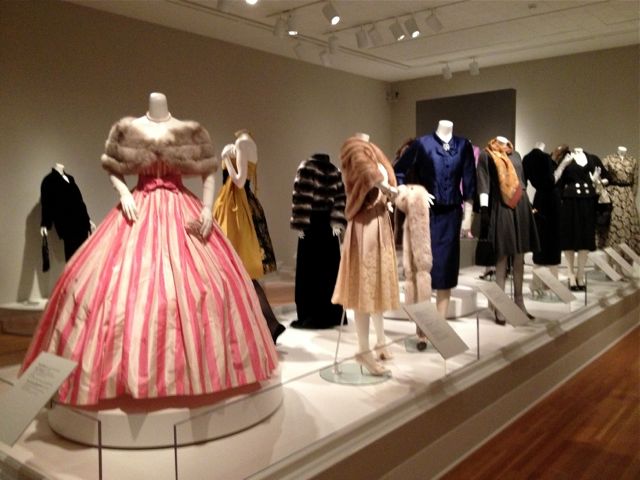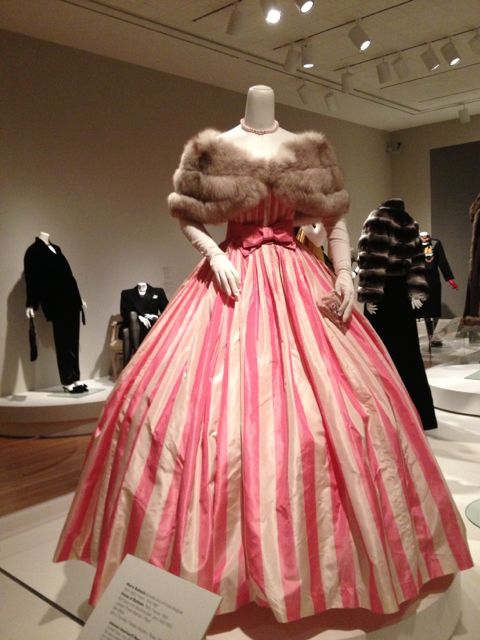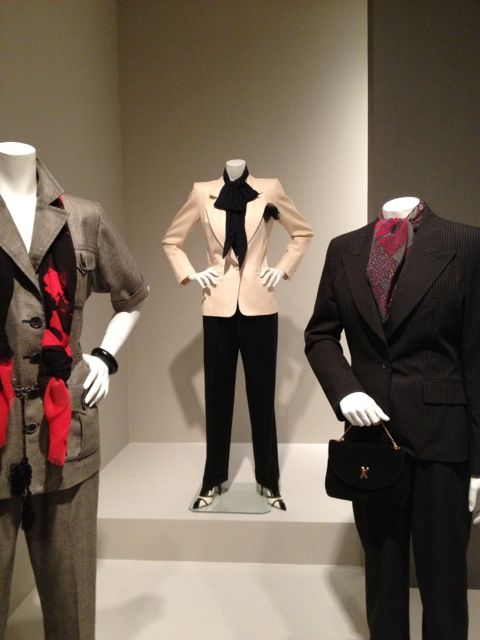
Parisian fashion at the Mint
“Elegance & Ease” explores the fashions of Dior, Balmain and Saint Laurent to be found in the Mint Museum’s fashion collection. This new exhibition at the Mint’s Randolph location opened on April 27th and will close January 12th, 2014. These three Parisian designers confirmed Paris as the center of modern haute couture in the ’40s, ’50s and ’60s, from Dior’s “New Look” with nipped-in waists and exaggerated hips and busts, to Balmain’s structured forms to Yves Saint Laurent’s tuxedo suits for women.
The exhibition shows a range of these signature looks, including evening dresses and wear-to-work outfits. Balmain’s pink striped ball gown, circa 1950-55, is particularly arresting and is appropriately placed at the center of the show. Saint Laurent’s suits from the 21st century present an interesting contrast to the ball gown and show the important evolution in fashion from the ’50s to today, accordingly hinting at women’s changing roles. Overall, however, the women underneath the suits, gowns and furs are largely left out. The exhibition labels focus on the revolutions in fashion that Dior, Balmain and Saint Laurent introduced, along with their biographical information. But what about the women who bought and wore these clothes? Where were they going in these outfits? What did they like about them?
Pierre Balmain for the House of Balmain, ca. 1950-55.
“Elegance & Ease” afforded the Mint Museum of Art (a Knight Arts grantee) an opportunity to delve underneath the aesthetic concerns of fashion and into women’s social and economic roles during this period by connecting women’s history with fashion history. The clothes in “Elegance & Ease” physically trace the evolution of girdled, padded and skirted forms to structured jackets and trousers, but no mention is made of the corresponding evolution in women’s lives — the change in their socially proscribed roles as homemakers to the ’80s power business woman. By and large, this was a missed opportunity; the exhibition could have had so much more depth if it had explored the minds and bodies choosing and wearing these fashions. As it is, the exhibition seems to suggest that the evolution in women’s fashion is solely a product of the creative genius of fashion designers and has absolutely nothing to do with the desires of consumers.
Right to left: Tom Ford for the House of Saint Laurent, 1999; Stefano Pilati for the House of Saint Laurent, ca. 2005-2010; Tom Ford for the House of Saint Laurent, ca. 200-2002.
Recent Content
-
Artsarticle ·
-
Artsarticle ·
-
Artsarticle ·



